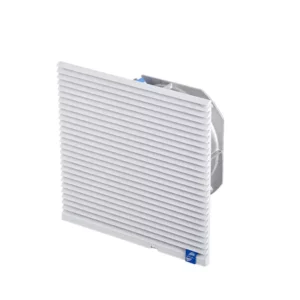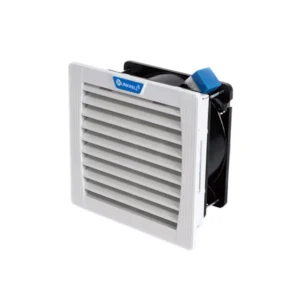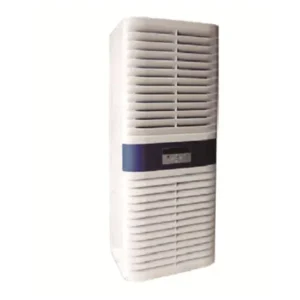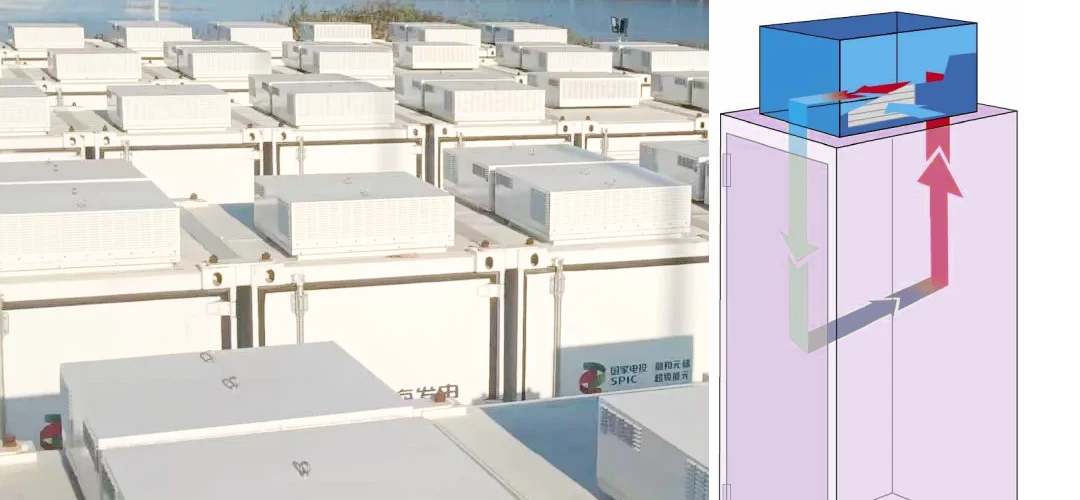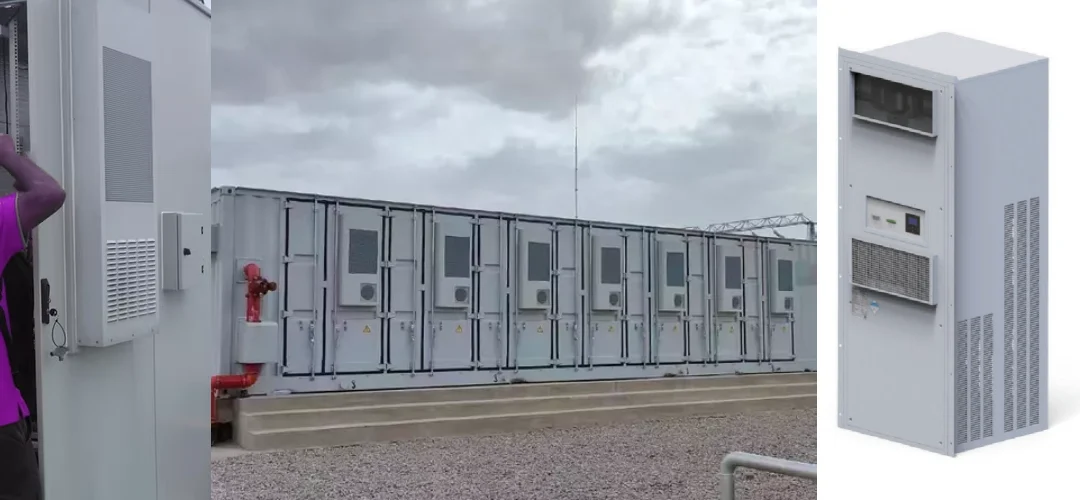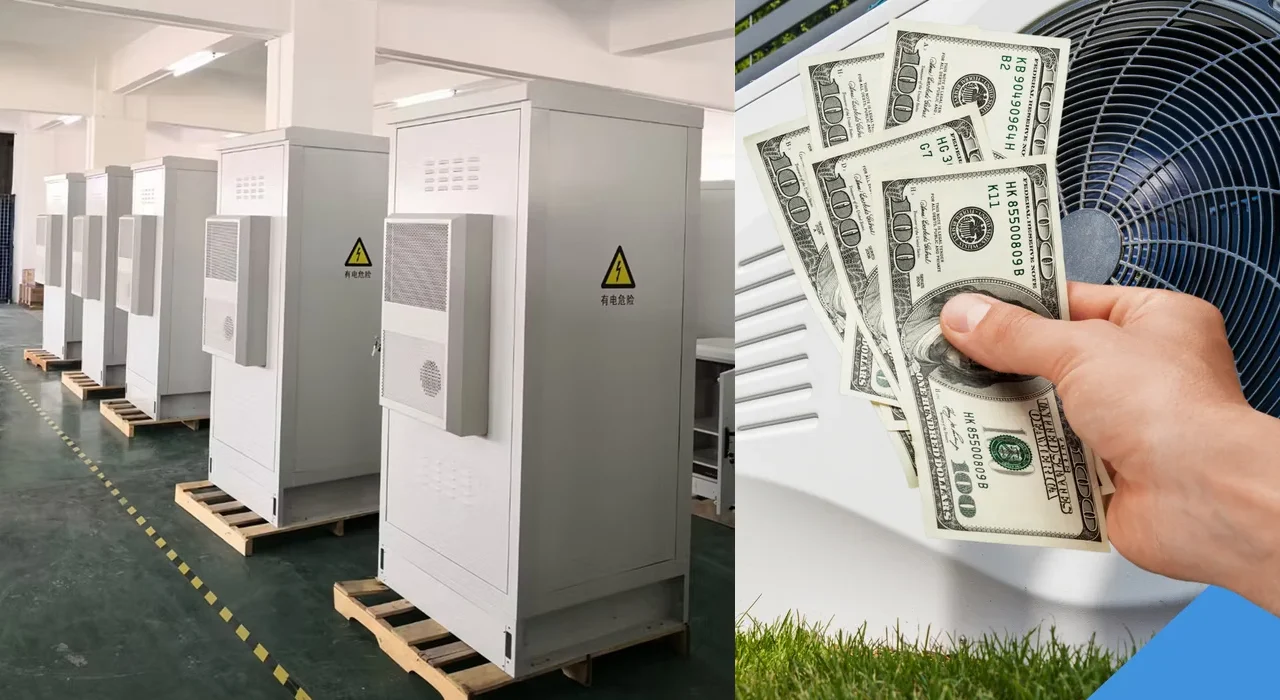If you’re trying to figure out the real difference between UL and cUL certifications for electrical enclosure cooling systems, you’re not alone. UL applies to the US, while cUL is for Canada. Each has unique compliance requirements that you need to meet. Why does this matter? Safety, legal rules, and smooth operations all depend on getting this right. Here’s what manufacturers often face:
- UL 484 covers the design of cooling units sold in the US.
- The National Electrical Code (NFPA 70) sets installation rules.
- NEMA standards define protection against dust and water.
- Special rules exist for hazardous locations.
- Canada has its own codes for installations.
Choosing a trusted provider like Linkwell makes UL vs cUL Electrical Enclosure Cooling Systems: Compliance much easier.
UL vs cUL Key Takeaways
- Understand the difference between UL and cUL certifications. UL is for the US, while cUL is for Canada. Each has specific safety standards.
- Always check for the UL or cUL mark before purchasing cooling systems. This ensures compliance with local safety regulations and avoids legal issues.
- Using non-compliant cooling systems can lead to serious risks, including fires and legal troubles. Choose certified products to protect your facility.
- Linkwell offers cooling systems that meet both UL and cUL standards. This simplifies compliance for businesses operating in North America.
- Verify the certification of your cooling system by checking the product label or using the UL Product iQ website. This step ensures your equipment is safe.
UL vs cUL Electrical Enclosure Cooling Systems: Compliance

UL Certification Overview
When you look for electrical enclosure cooling systems in the United States, you need to check for UL certification. UL stands for Underwriters Laboratories, a trusted testing agency. UL certification means your cooling system meets strict safety and performance standards. In the US, the National Electric Code (NFPA 70) requires that electrical equipment in industrial facilities must be listed or labeled by UL or another recognized lab. To get a UL label, your device must pass tests in an OSHA-approved lab. Inspectors also visit the manufacturing site to make sure production stays reliable. The ANSI/UL 484 standard sets the rules for how these cooling systems should be built and how they should perform. If you choose a UL-certified product, you know it meets the legal requirements for safety and reliability.
Linkwell offers electrical enclosure cooling systems that meet UL and cUL requirements. You get peace of mind knowing your equipment is safe and compliant.
cUL Certification Overview
If you need cooling systems for use in Canada, you should look for cUL certification. cUL means the product meets Canadian safety standards and has been tested by Underwriters Laboratories. The cUL requirements focus on Canadian codes and standards. Here’s a quick look at the main standards for cUL certification:
| Standard | Description |
|---|---|
| CAN/CSA C22.1 | Covers electrical safety rules in Canada, including wiring and equipment. |
| Section 22.2 | Provides detailed rules for different types of electrical products. |
| UL 50 | Addresses safety for enclosures, including protection against dust and water. |
| UL 248-1 | Focuses on low-voltage fuses used in electrical enclosures. |
When you see the cUL mark on a Linkwell cooling system, you know it meets Canadian safety and performance requirements. This helps you avoid problems with local inspectors and keeps your operations running smoothly.
Key Differences
You might wonder what sets UL and cUL certifications apart. Here’s what you need to know about ul vs cul electrical enclosure cooling systems: compliance:
- UL certification applies to products sold in the US. It follows ANSI/NFPA 70 and ANSI/UL 484 standards.
- cUL certification is for products in Canada. It follows CAN/CSA 22.1-12 and special sections for heating and cooling equipment.
- UL and cUL requirements are not interchangeable. Each reflects different national standards and local regulations.
- Both certifications show that a product meets safety standards, but you must choose the right one for your location.
If you use a cooling system without proper certification, you risk overheating, equipment damage, and even fires. Non-compliance can lead to legal trouble and financial losses. You want to avoid these risks by choosing certified products from trusted brands like Linkwell.
When you compare ul vs cul electrical enclosure cooling systems: compliance, you see that each certification protects you from different risks and meets different legal requirements. UL and cUL requirements help you stay safe and avoid costly mistakes. Linkwell makes it easy to find certified solutions for both the US and Canada.
Tip: Always check for the UL or cUL mark before buying electrical enclosure cooling systems. This simple step can save you time, money, and headaches.
Understanding UL and cUL Marks
Identifying the Marks
When you shop for electrical enclosure cooling systems, you want to spot the right certification marks. The ul mark and cul mark are usually found on the product label or nameplate. You’ll see these marks on Linkwell Cabinet Air Conditioners and Electrical Enclosure Fans. They look like a small “UL” or “cUL” logo, sometimes followed by the word “Listed” and a file number.
If you want to check if the ul mark or cul mark is authentic, you can follow these steps:
- Go to the UL Product iQ website.
- Register for a free account if needed.
- Enter the file number from your product’s label, or type in the model number and brand.
- Review the results to confirm the certification matches your unit.
You can also search by manufacturer name or file number, then compare the data with your unit’s model number. If everything matches, your cooling system is officially UL Listed or cUL Listed.
Tip: Always verify the ul mark or cul mark before installation. This step helps you avoid compliance issues and ensures your equipment is safe.
What the Marks Mean for Compliance
The ul mark and cul mark aren’t just stickers. They show that your cooling system meets strict safety and performance standards. Here’s what each mark means for you:
- The ul mark means your system passed tests set by Underwriters Laboratories. It meets ANSI safety requirements and the National Electrical Code. You get assurance that your equipment is safe and reliable.
- The cul mark shows your system complies with Canadian safety standards, especially the Canadian Electrical Code. Inspectors in Canada look for this mark during approval.
| Certification Mark | Description |
|---|---|
| cUL | Indicates compliance with Canadian safety standards, specifically the Canadian Electrical Code. |
| UL | Confirms compliance with American safety standards. |
If you see the ul mark or cul mark on your Linkwell cooling system, you know it’s ready for use in the US or Canada. These marks help you pass inspections, reduce liability, and keep your operations running smoothly.
Certification Standards and Differences
US Standards (UL, NEC)
When you look at electrical enclosure cooling systems in the United States, you need to pay attention to the certification standards set by underwriters laboratories and the national electric code. UL 484 is the main standard for these systems. It covers special purpose air conditioners and sets strict requirements for how they should work inside an enclosure. Here’s a quick table to show you what UL 484 expects:
| Requirement | Description |
|---|---|
| UL 484 | Covers special purpose air conditioners for installation per NFPA 70. |
| Compressor | Uses hermetic refrigerant motor compressors with factory charged systems. |
| Air Circulation | Includes means for circulating air. |
| Heating and Ventilation | May have provisions for heating and ventilation. |
You also need to follow the national electric code. This code makes sure your enclosure is safe for different uses. You must install your cooling system according to NEC guidelines. These requirements help you avoid safety problems and make sure your system gets certified.
- The NEC sets safety and performance standards for electrical enclosures.
- You must design and certify cooling systems to meet NEC requirements.
- Installations must follow NEC rules, which affect the certification process.
Canadian Standards (cUL, CSA)
If you plan to use your enclosure cooling system in Canada, you need to meet different standards. The Canadian electric code and CSA codes set the requirements for safety and performance. In Canada, the standards for electrical enclosure cooling systems are governed by CSA codes. These include CSA C22.2 No. 301 and CSA C22.2 No. 286, along with the Canadian electric code. These standards make sure your equipment is safe and reliable. You must follow these requirements to get cUL certification.
Testing and Evaluation Differences
You’ll notice some clear differences between US and Canadian certification standards. In the US, underwriters laboratories test your enclosure cooling system based on UL 484 and NEC rules. In Canada, the CSA and Canadian electric code set their own requirements. The testing process in the US focuses on air circulation, compressor safety, and installation. Canadian standards look at different safety precautions and may require extra steps for approval. These differences mean you can’t use one certification for both countries. You need to choose the right certification standards for your location.
Tip: Always check the certification standards before you buy or install an enclosure cooling system. This helps you avoid problems and keeps your equipment safe.
Certification Process for Electrical Enclosure Cooling Systems
Steps for UL Certification
If you want your electrical enclosure cooling systems to meet ul standards in the US, you need to follow a clear process. Here’s how it usually works:
- Design Review: UL engineers look at your product’s drawings, materials, and manufacturing plans. They check for any design problems before testing starts.
- Prototype Testing: You build a prototype. UL tests it for electrical safety, mechanical strength, environmental durability, and fire resistance.
- Factory Inspection: UL visits your factory. Inspectors check your production methods, quality controls, and worker training.
- Ongoing Surveillance: UL keeps an eye on your factory with regular inspections and surprise audits. This makes sure your electrical products always meet ul requirements.
You need to pass every step to get the ul mark for your cooling system.
Steps for cUL Certification
If you plan to sell electrical enclosure cooling systems in Canada, you need cul certification. The process looks similar, but the standards match Canadian codes. You submit your product for review. UL checks your design against Canadian safety rules. Your prototype goes through tests for electrical safety and environmental protection. Factory inspections confirm you follow cul requirements. Regular audits keep your certification valid.
Dual Certification
Want to cover both the US and Canada? Dual certification is your best option. You get both ul and cul marks on your electrical enclosure cooling systems. This means you can sell your products in North America without extra hassle. Dual certification saves you time and money. You avoid redesigning or retesting for each country. Linkwell’s Cabinet Air Conditioner and Electrical Enclosure Fan are great examples. They meet both ul and cul standards, so you can use them anywhere in North America.
Tip: If you need help obtaining ul and cul certification, choose a supplier like Linkwell. You get support for every step, from design to inspection.
Buyer Considerations: Choosing the Right Certification
Location-Based Compliance
You want your electrical enclosure cooling systems to meet the right safety requirements for your location. If you’re in the US, look for the UL mark. If you’re in Canada, check for the cUL mark. Linkwell makes this easy by offering products that are certified for both regions. Always match the certification to your installation site. This helps you avoid problems with inspectors and keeps your equipment running safely. When you choose Linkwell, you get cooling systems that meet strict safety standards and work in hazardous conditions.
Risks of Non-Compliance
Using non-compliant equipment can create serious hazard for your facility. Here are some common risks you might face:
- Fires or explosions can happen if systems don’t meet safety standards.
- Toxic leaks may occur from improper cooling units.
- Legal troubles and costly delays often follow failed inspections.
- Cooling systems may not be certified for hazardous material groups.
- Enclosures might not protect against water or dust.
- Materials could rust or degrade in harsh environments.
- Lack of maintenance records can make risks worse.
| Evidence Type | Description |
|---|---|
| Negligence | You could be held liable if a fire is linked to a defective system. |
| Insurance Denial | Insurers may deny claims for non-compliant installations. |
| Duty of Care | You must ensure safe conditions or face legal action. |
| Coverage Refusal | Insurance companies often refuse to cover damages from non-certified systems. |
You want to avoid these risks by choosing certified cooling systems that meet all safety requirements.
Verifying Certification
You can check if your electrical enclosure cooling system is truly certified. Here’s how:
- Look for the UL or cUL mark from an approved testing lab.
- Make sure the equipment matches the safety requirements for your area.
- Only buy certified products to ensure safety.
In order to receive a UL label, a sample number of devices must be tested by a nationally recognized testing laboratory approved by OSHA. The manufacturing facility must also be inspected and its production processes verified for reliability before the label can be applied to each device sold.
If you follow these steps, you can trust your cooling system to perform safely, even in hazardous conditions.
Linkwell Solutions for UL and cUL Compliance
Cabinet Air Conditioner Compliance
You want your electrical cabinet air conditioner to deliver reliable cooling and meet strict safety standards. Linkwell makes this easy for you. Every unit comes with ul and cul certification, so you know it’s ready for use in the US or Canada. You get peace of mind because Linkwell uses certified components and follows international safety standards. The cabinet air conditioners also feature NEMA and IEC protection ratings, which means they work well in tough environments.
Take a look at how Linkwell’s cabinet air conditioners meet ul and cul requirements:
| Feature | Compliance Standard |
|---|---|
| Certified components | UL, cUL |
| Compliance with international safety standards | UL, CE, ISO |
| NEMA and IEC enclosure protection ratings | UL, cUL |
You can trust Linkwell to deliver electrical cooling systems that pass every test. The brand’s focus on quality and safety helps you avoid problems with inspectors and keeps your equipment running smoothly.
Note: Linkwell’s cabinet air conditioners are designed for easy installation and long-term reliability. You get support from a team that understands ul and cul compliance inside and out.
Electrical Enclosure Fan Compliance
If you need electrical cooling systems that meet ul and cul standards, Linkwell’s enclosure fans are a smart choice. These fans have passed ul 50E thermal circulation tests, so you know they keep your equipment at safe temperatures. The fans also meet ul 508A requirements, with airflow path markings and vent types that help prevent fire risks. You get vent modules with insect screens and flame-trap features, adding another layer of safety.
Here’s how Linkwell’s electrical enclosure fans meet ul and cul standards:
| Evidence Description | Details |
|---|---|
| UL 50E Thermal Tests | Fans maintain safe temperatures within enclosures. |
| UL 508A Compliance | Airflow path markings and vent types support fire containment. |
| Vent Module Specifications | UL-listed modules with insect screens and flame-trap capabilities. |
| IEC Compliance | Fans selected for dust and oil environments, supporting reliability. |
You get electrical cooling systems that work in harsh conditions and meet every safety rule. Linkwell’s commitment to ul and cul compliance means you can install these fans with confidence.
Tip: When you choose Linkwell, you get more than just certified products. You get a partner who cares about your safety, quality, and project success.
You want to keep your facility safe and compliant, so understanding UL and cUL differences for electrical enclosure cooling systems matters. UL creates its own safety standards, giving you extra assurance compared to other certifications. Picking the right certification for your region protects people and equipment from risk.
| Certification | What It Means for You |
|---|---|
| UL | Direct safety standards, higher assurance |
| cUL | Meets Canadian codes, ensures local compliance |
- Choosing properly rated products helps you avoid legal trouble.
- Standards make it easy to know your equipment is built to last.
Trust certified brands like Linkwell for reliable support and peace of mind.
FAQ
What’s the difference between UL and cUL marks?
UL means your product meets U.S. safety standards. cUL shows it meets Canadian safety rules. You need UL for the U.S. and cUL for Canada. Always check the mark before you buy.
Can I use a UL-only cooling system in Canada?
No, you can’t. Canadian inspectors look for the cUL mark. If your system only has UL, you might fail inspection. Always match the certification to your location.
How do I check if my Linkwell cooling system is certified?
Look for the UL or cUL mark on the label.
You can also search the model number on the UL Product iQ website. This helps you confirm real certification.
Why should I care about certification for electrical enclosure cooling systems?
Certification keeps your equipment safe and legal. It helps you avoid fires, fines, and insurance problems. Certified systems also last longer and work better.

